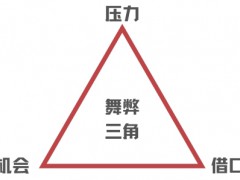???? 據每日能源網站4月7日消息:在新冠肺炎大流行期間,美國去年的能源消耗比2019年減少7%,這是自1949年能源信息署(EIA)開始收集數據以來最大的年度降幅。
????所有行業均出現下滑,盡管有些行業表現優于其他行業。由于大多數人被困在家里,交通運輸受到了最大打擊,今年下降15%。幾乎所有降幅都是由于旅行限制的出現而減少了石油的使用。航空燃油使用量下降38%,汽車汽油下降13%,柴油下降7%。
????商業和工業部門的能耗分別下降7%和5%。對于商業方面,這是由于企業關門、家庭訂單工作以及天氣稍暖所致。從工業方面看,美國對各種產品的需求減少導致原油和天然氣產量下降,因此生產、精煉和加工產品的能源利用較少。商業用氣消費下降11%,而電力零售額則下降6%。工業方面,所有主要能源都有所下降:煤炭下降16%,石油下跌4%,天然氣下降2%,電力零售額下降8%。
????此外,房產市場全年僅下跌1%。由于許多人在家里花費額外時間,該行業的電力銷售實際上增長了2%。冬季氣候變暖使得取暖所需能源消耗減少,生物質消耗下降16%,石油消耗下降11%,天然氣消耗下降7%。
????在去年之前,美國能源消耗的年度最大降幅為5%,發生在2008年至2009年經濟衰退的核心時期。
????馮娟 摘譯自 每日能源
????原文如下:
????EIA: 2020 saw 7 percent decrease in U.S. energy consumption
????Amid the COVID-19 pandemic, U.S. energy consumption fell by 7 percent last year, compared to 2019, marking its largest annual fall since the Energy Information Administration (EIA) began gathering data in 1949.
????All sectors were down, though some fared better than others. With most people bottled up at home, transportation understandably took the heaviest hit, falling by 15 percent to 24 quads for the year. Almost all of this was attributable to decreased petroleum use for travel, as travel restrictions sprang up. Jet fuel usage fell by 38 percent, motor gasoline by 13 percent, and diesel by 7 percent.
????The commercial and industrial sectors experienced 7 and 5 percent reductions in energy consumption, respectively. For the commercial side, this was due to closed businesses, work from home orders, and somewhat warmer weather. On the industrial side, decreased U.S. demand for various products led to lower production of crude oil and natural gas, and therefore utilized less energy to produce, refine, and process products. Commercial gas consumption dropped 11 percent, while electricity retail sales fell by 6 percent. In industry, all major sources of energy fell: coal by 16 percent, petroleum by 4 percent, natural gas by 2 percent, and retail sales of electricity by 8 percent.
????Rounding things out was the residential side of the market, which saw a mere 1 percent drop over the year. Sales of electricity to that sector actually increased by 2 percent due to many people spending extra time at home. Warmer winter weather brought less need to consume energy for heating, though, with consumption of biomass down by 16 percent, petroleum by 11 percent, and natural gas by 7 percent.
????Until last year, the largest recorded annual decrease in U.S. energy consumption was 5 percent, which occurred between 2008 and 2009, in the heart of the economic recession.
免責聲明:本網轉載自其它媒體的文章,目的在于弘揚石化精神,傳遞更多石化信息,并不代表本網贊同其觀點和對其真實性負責,在此我們謹向原作者和原媒體致以敬意。如果您認為本站文章侵犯了您的版權,請與我們聯系,我們將第一時間刪除。







